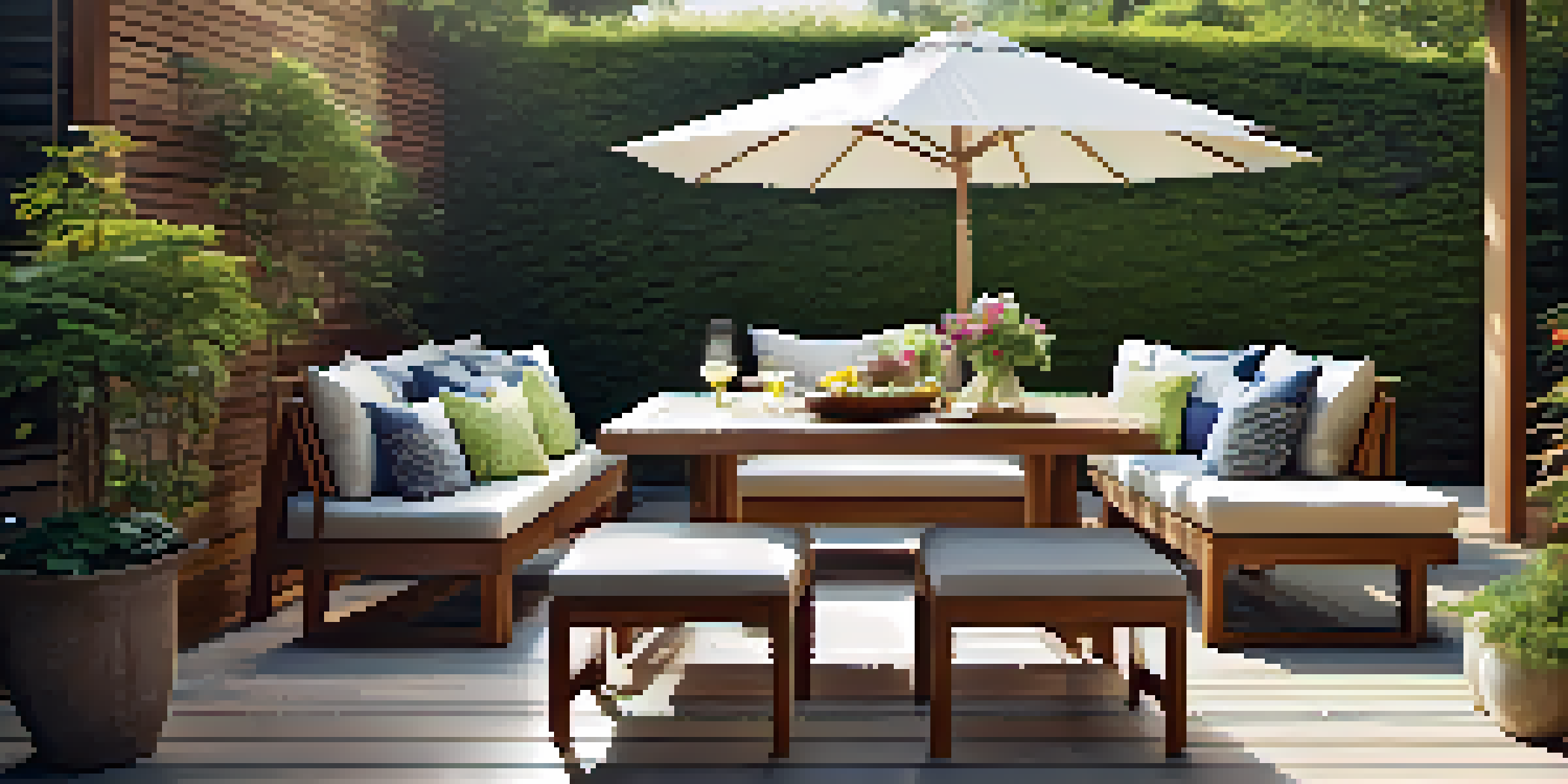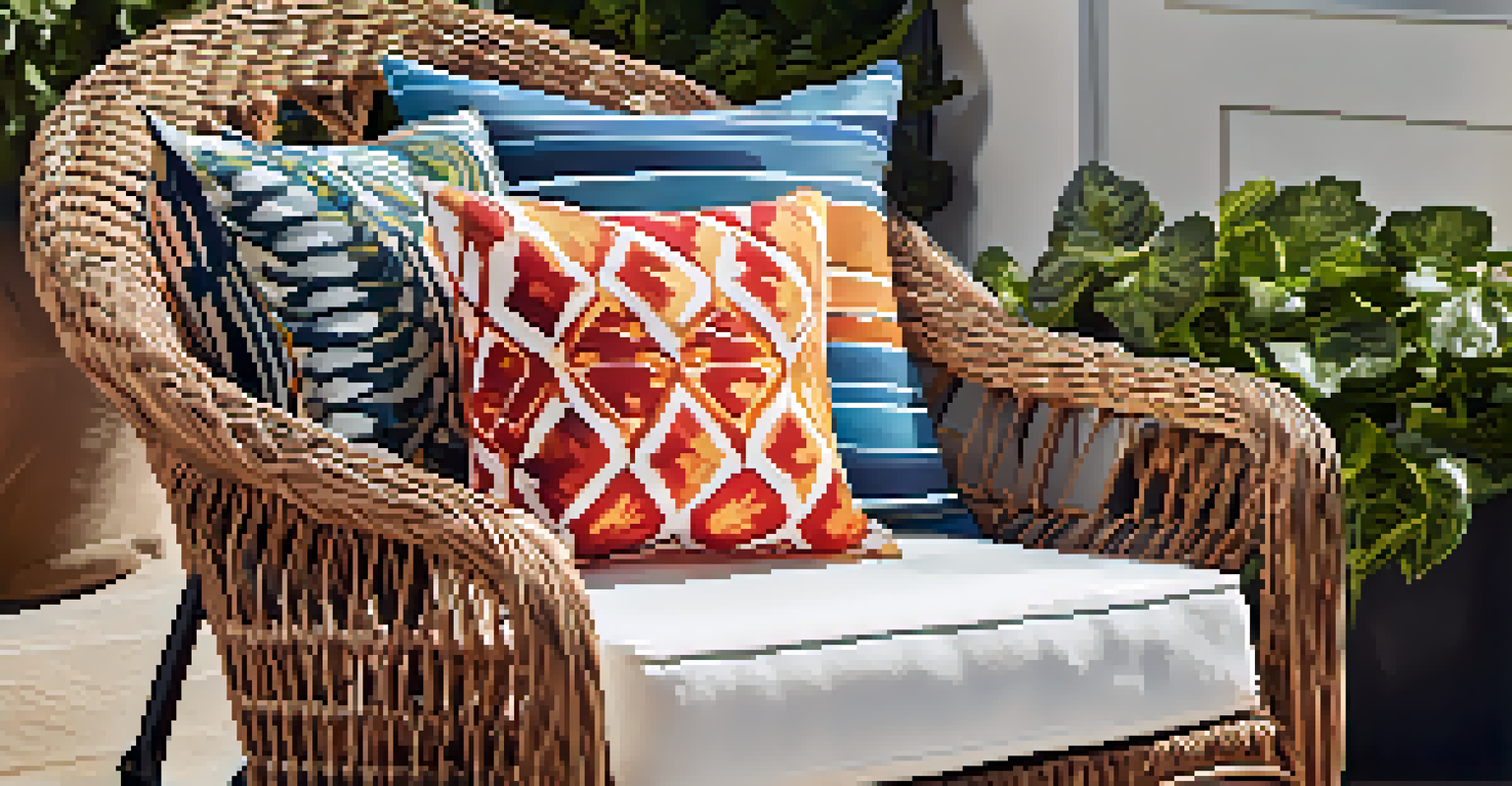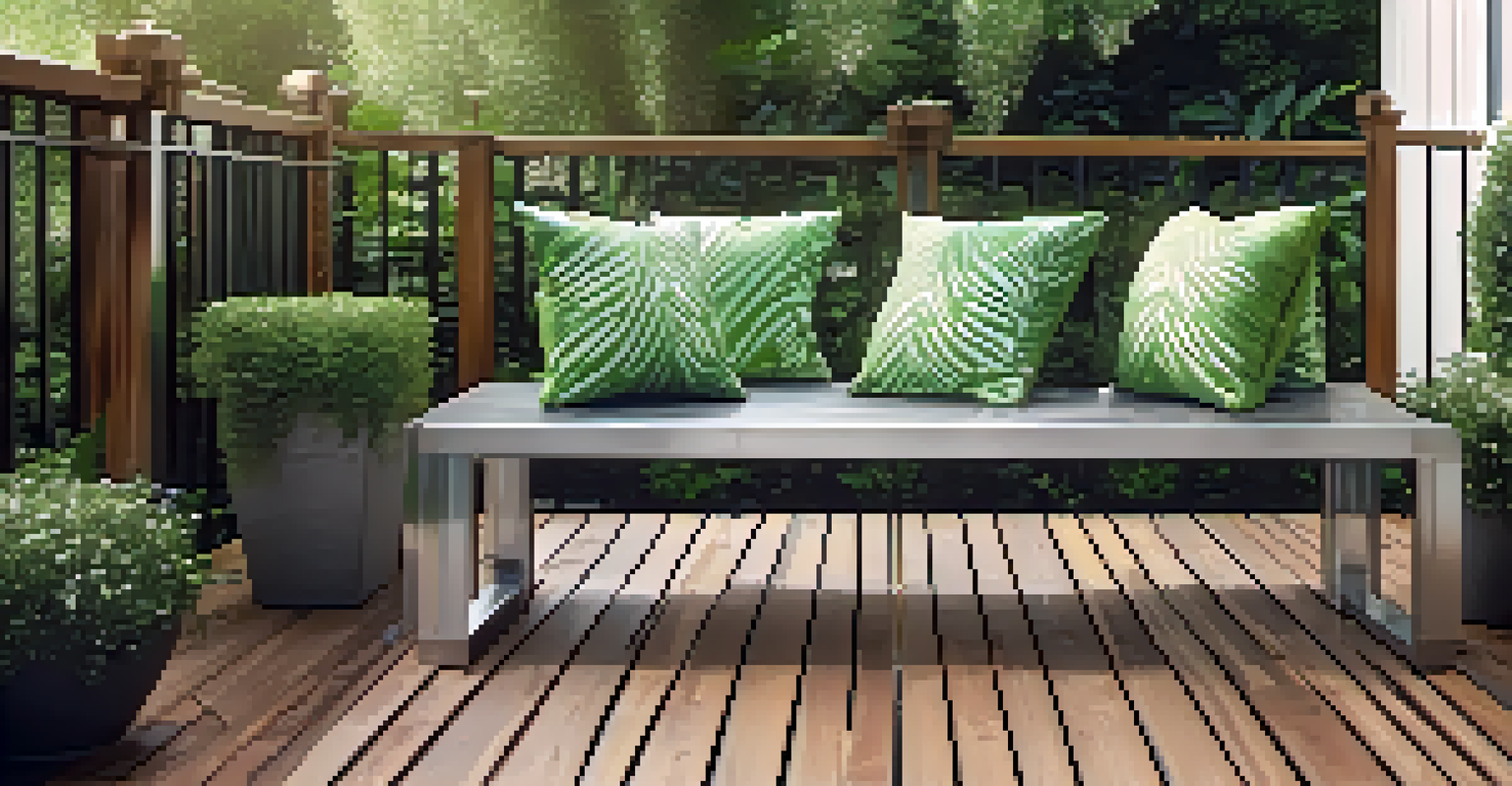Building Outdoor Furniture: Tips for Weather-Resistant Designs

Understanding Weather-Resistant Materials for Outdoor Furniture
When building outdoor furniture, the choice of materials is crucial. Weather-resistant materials like teak, cedar, and synthetic wicker can withstand moisture, sun, and temperature fluctuations. These materials not only offer durability but also enhance the aesthetic appeal of your outdoor space.
Quality is not an act, it is a habit.
For example, teak wood has natural oils that repel water, making it an excellent choice for outdoor settings. Similarly, aluminum is lightweight yet resistant to rust, which is ideal for areas prone to rain. Understanding these properties helps ensure your furniture lasts for years to come.
Incorporating such materials into your designs will not only save you money in the long run but also provide peace of mind. It's always better to invest in quality materials that can handle the elements than to replace cheaper options frequently.
Designing for Rain: Elevation and Drainage Considerations
When it comes to outdoor furniture, proper drainage is key to longevity. Elevating your furniture slightly off the ground can help prevent water pooling, which can lead to rot or rust. This simple design feature can dramatically increase the lifespan of your pieces.

Consider incorporating slatted designs in tables or benches, as these allow rainwater to flow through rather than accumulate. Adding a slight slope can also assist in directing water away from critical areas. Think of your outdoor furniture as a mini-architecture project, where every detail counts.
Choose Durable Materials Wisely
Selecting weather-resistant materials like teak and aluminum ensures your outdoor furniture withstands the elements and lasts longer.
By prioritizing drainage in your designs, you’re not just enhancing functionality; you’re also showcasing attention to detail. Your guests will appreciate the thoughtful design, and you’ll enjoy your furniture without worrying about the weather.
Protective Finishes: Sealing and Staining for Durability
Applying protective finishes to your outdoor furniture can significantly extend its life. Sealants and stains not only enhance the natural beauty of the materials but also provide an additional layer of defense against moisture and UV rays. Think of it as sunscreen for your furniture!
The details are not the details. They make the design.
For wood pieces, consider using a high-quality sealant specifically designed for outdoor use. These products can prevent water damage and fading caused by sun exposure. Regular maintenance, such as reapplying these finishes annually, can keep your furniture looking new.
Investing time in protective finishes is well worth it. Just as we take care of our skin to prevent damage from the sun, your furniture deserves the same level of care to withstand the elements.
Choosing the Right Design: Style Meets Functionality
When designing outdoor furniture, balancing style and functionality is vital. While you want your pieces to be visually appealing, they must also serve their purpose effectively. A beautiful bench that doesn't withstand rain is less useful than a simple, sturdy one.
Consider multifunctional designs, such as storage benches or tables that can double as seating. These types of furniture can maximize your outdoor space while providing practicality. Imagine a table that not only holds drinks but also stores cushions away from rain!
Prioritize Drainage in Design
Incorporating elevation and slatted designs helps prevent water pooling, enhancing the durability and functionality of your outdoor furniture.
Finding that sweet spot between aesthetics and utility will elevate your outdoor area. Your space should reflect your style while ensuring that each piece serves a purpose, creating an inviting atmosphere for friends and family.
Incorporating Accessories: Adding Comfort and Style
Accessories can transform basic outdoor furniture into an inviting oasis. Think cushions, throws, and outdoor rugs that not only add comfort but also enhance the overall design. Just as you might dress up your living room, your outdoor space deserves some flair too!
When selecting accessories, opt for weather-resistant fabrics and materials. These items should be designed to withstand the sun and rain, ensuring they stay vibrant and comfortable. For instance, outdoor cushions made with UV-protected fabric are a fantastic choice.
By carefully selecting accessories, you can create a personalized outdoor space that reflects your style. It’s the little details that can make a big difference, inviting people to relax and enjoy your well-thought-out outdoor area.
Maintenance Tips: Keeping Your Outdoor Furniture in Top Shape
Regular maintenance is crucial for preserving your outdoor furniture's longevity. Simple tasks like cleaning and inspecting for damage can go a long way in keeping your pieces looking and functioning their best. Think of maintenance as a routine check-up for your furniture.
Depending on the material, the cleaning process may vary. For instance, wooden furniture may require gentle scrubbing with soap and water, while metal furniture might need a wipe-down with a damp cloth. Always follow the manufacturer's guidelines for best results.
Maintain for Longevity
Regular maintenance, including cleaning and protective finishes, is essential to keep your outdoor furniture in great shape and looking new.
By committing to a maintenance routine, you’ll ensure your outdoor furniture remains in top shape. This proactive approach will save you time and money in the long run, allowing you to enjoy your outdoor oasis without worry.
DIY vs. Store-Bought: Weighing Your Options
When it comes to outdoor furniture, you might find yourself torn between DIY projects and purchasing ready-made pieces. Each option has its pros and cons, and the right choice often depends on your skills, budget, and personal preferences. Think of it as choosing between cooking at home or dining out.
DIY furniture can be a rewarding experience, allowing you to customize designs and save money. However, it requires time, tools, and a certain level of skill. On the other hand, buying furniture can save time and guarantee professional quality, but it may come with a higher price tag.

Ultimately, the decision comes down to what works best for you. Whether you choose to create your own pieces or invest in store-bought options, both paths can lead to beautiful outdoor spaces that you’ll love.